‘I Feel Lost. I Feel Like a Child’: The Complicated Decline of Nick Buoniconti

This story appears in the May 15, 2017, issue of Sports Illustrated. To subscribe, go here.
They owned the lobby back then. Heads always turned. Men tried not to stare. Kids edged close. The women smiled wider, spoke a bit louder, and maybe their interest was innocent but they sure took the story back home with them, the one about—You won’t believe!—the big name they saw checking into the hotel.
Because in their prime they weren’t like the rest of us. They were larger, better looking—or maybe they just seemed that way because, come September, you saw their faces popping off the TV and in shiny magazines and newspapers. They were pro football players, weekend gods, loud and sure that they owned every room.
That feeling never fully dies. “Teddy!” Nick Buoniconti yells across the lobby of The Inn at Spanish Bay, near Pebble Beach.
It is a November Sunday in 2016, past twilight. The Hall of Fame linebacker, 75 but only slightly bent, is sitting with his wife, Lynn, at a polished table. The fresh faces behind the front desk don’t know Buoniconti; it has been 44 years since he co-captained the Dolphins to three straight Super Bowl seasons, including the league’s only perfect campaign, 17-0 in 1972. He’s not alone: Nearly two dozen greats from the ’70s, ’80s and ’90s are here, wandering through the lobby toward the Grand Ballroom for the 26th annual Legends Invitational dinner. The oldest pass through mostly unnoticed.
But not by everyone. Not by anyone who grew up in the time when we knew little of players besides their names. Starr. Staubach. Tatum. Franco. Say just those words and an entire graying generation will transport back to the primordial highlight show, This Week in Pro Football, all operatic slo-mos and mythic narration.
In the next few hours a roster of venerables—Paul Warfield, Jan Stenerud, Jim Hart—will each utter a small shock at being remembered at all. This will at first seem odd, but it makes sense once they speak of how they missed out on free agency, or spent years fighting the league for better pensions, or are scrambling now to hack through the thicket of the NFL’s $1 billion concussion lawsuit settlement.
“Teddy!” Buoniconti yells again, and over comes Ted Hendricks, 69, along with his longtime partner, Linda Babl. Hendricks, the 6’7” linebacker dubbed “the Mad Stork” and “Kick ’Em in the Head Ted” for his loopy intensity on and off the field, played 15 years in the NFL, partied epically and never missed a game. Nick and Lynn stand.
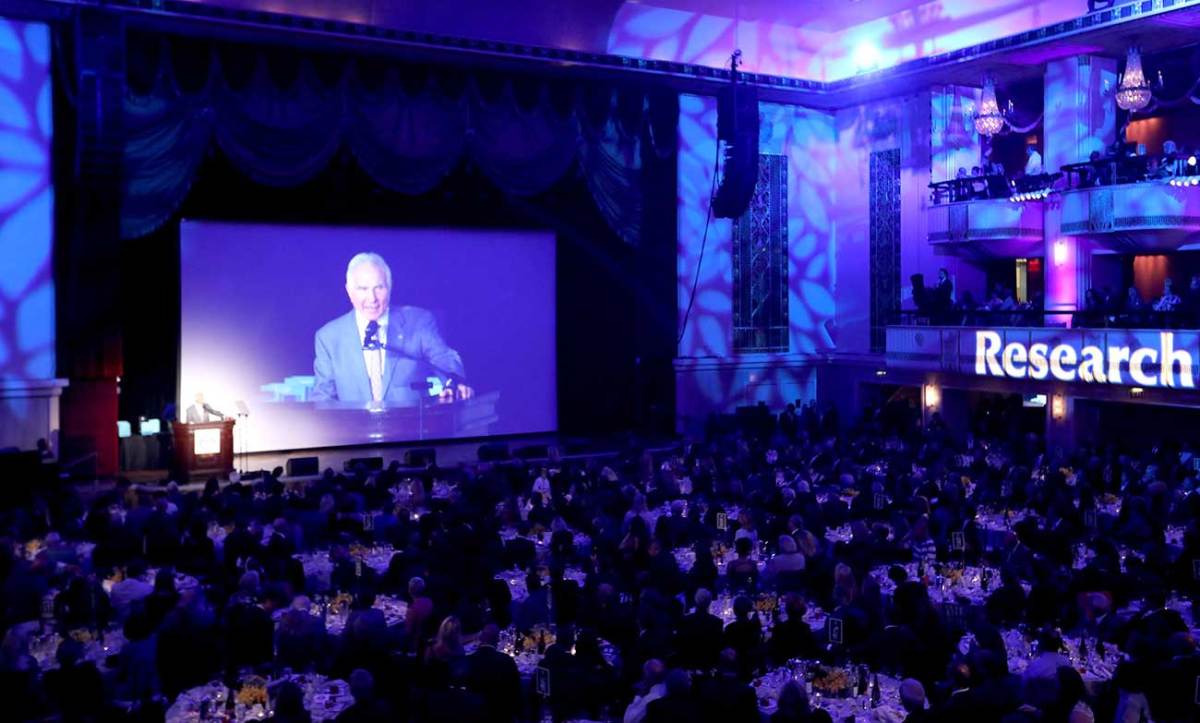
“How are you doing, Teddy?” Lynn asks.
“Good,” says Ted, grinning. At that, Buoniconti unleashes a deep sigh, one so operatic that at first it seems involuntary; but later, after spending hours with him, one comes to know it as his fallback signal of dismay and, quite often, a looming explosion. Linda’s head pivots.
“How’ve you been?” she says.
Buoniconti doesn’t explain that he can’t figure out how to knot a tie or towel his back. He doesn’t speak of his increasingly useless left hand, the increasingly frequent trips to the emergency room or how, just a few days earlier at his home on Long Island, he hurtled backward down a staircase and sprayed blood all over the hardwood, screaming afterward at Lynn, “I should just kill myself! It doesn’t matter!” He doesn’t mention the three staples subsequently crimped into his scalp, doesn’t explain that just yesterday—in a fit of unexplainable pique, and against his own doctor’s orders—he had another physician come to his hotel room and yank those staples out.
“You know,” Buoniconti says.
And he’s right. Like most everyone who’s close to a former NFL player, Linda is living some variation of the same story. They’ve all seen the big-budget concussion movie and the news clips; they’ve read about the deaths of Junior Seau and Dave Duerson; they’re comparing notes on Facebook about the damage caused by repeated head trauma. They study their men. They accompany them to brain studies and name-drop superstar CTE researchers like Julian Bailes, Bennet Omalu, Robert Cantu, Ann McKee.
“We went to see Dr. Bailes last month, because he’s in Chicago now,” Linda says. “He’s really impressive, as far as one-to-one. Ted’s been in his study in North Carolina, the neuro-feedback . . . .”
Buoniconti releases another sigh.
It’s so random. Hendricks has only minor memory lapses. Some of Buoniconti’s Dolphins teammates, meanwhile, are crumbling. Quarterback Earl Morrall, the supersub so key to the Perfect Season, died at 79, in 2014, with Stage 4 CTE. Running back Jim Kiick, 70, lived in squalor until he was placed in an assisted living facility last summer with dementia/early onset Alzheimer’s. Bill Stanfill, a defensive end who long suffered from dementia, died in November at 69. His brain and spine were sent to the CTE center at Boston University, where the disease has been found in 96% of players’ brains studied. (Granted, that’s 96% of a group whose medical or playing history already suggests some sort of brain disease.)
“Everybody’s searching,” Buoniconti says in an aside, dropping his voice. “Some go to North Carolina, some to BU, some to UCLA. And it’s all related. That’s why it’s so unnecessary, what the NFL is putting the players through by making us document the neurological deficiencies. Not everybody can afford to go through that. And they say they’ll pay for it—but do you know what that’s like, actually getting the money?”
Ted and Linda leave for the ballroom. Nick and Lynn sit. Hall of Fame Vikings defensive end Chris Doleman stops by. He talks about how even the most familiar routines have become confounding, how he wakes up in his own bed wondering, Am I in a hotel? “And I’m 55,” he says. “I don’t know what I’ll be like at 59 or 65.”
“At 55 I was very normal,” Buoniconti says. “I’m not normal anymore.”
This is hard, at times, to believe. Everyone tells Nick he looks “great.” Indeed, he’ll soon get up before a packed ballroom and emcee the night’s program, tick off the names of every co-host, sponsor and speaker, tell war stories. He’ll even fire off a snappy rejoinder to a heckler in the crowd.
But few saw Buoniconti teeter as he walked off the stage, perhaps because of the atrophy to his right frontal cortex seen in 2015. Fewer noticed Nick motioning for Lynn as he bolted from the ballroom, perhaps because of the neurodegenerative dementia diagnosis just a month ago—or the yet-unspoken opinion that his condition could actually be corticobasal syndrome, complicated by an atypical Parkinsonian Syndrome or CTE or Alzheimer’s. He had to pee. And Lynn had to stand by to unbutton and unzip him and ensure that he’d emerge from the men’s room dry and unexposed.
And no one here saw him before all that, when Buoniconti stood up in the hotel lobby and headed toward the ballroom. “I feel lost,” he said. “I feel like a child.”
* * *
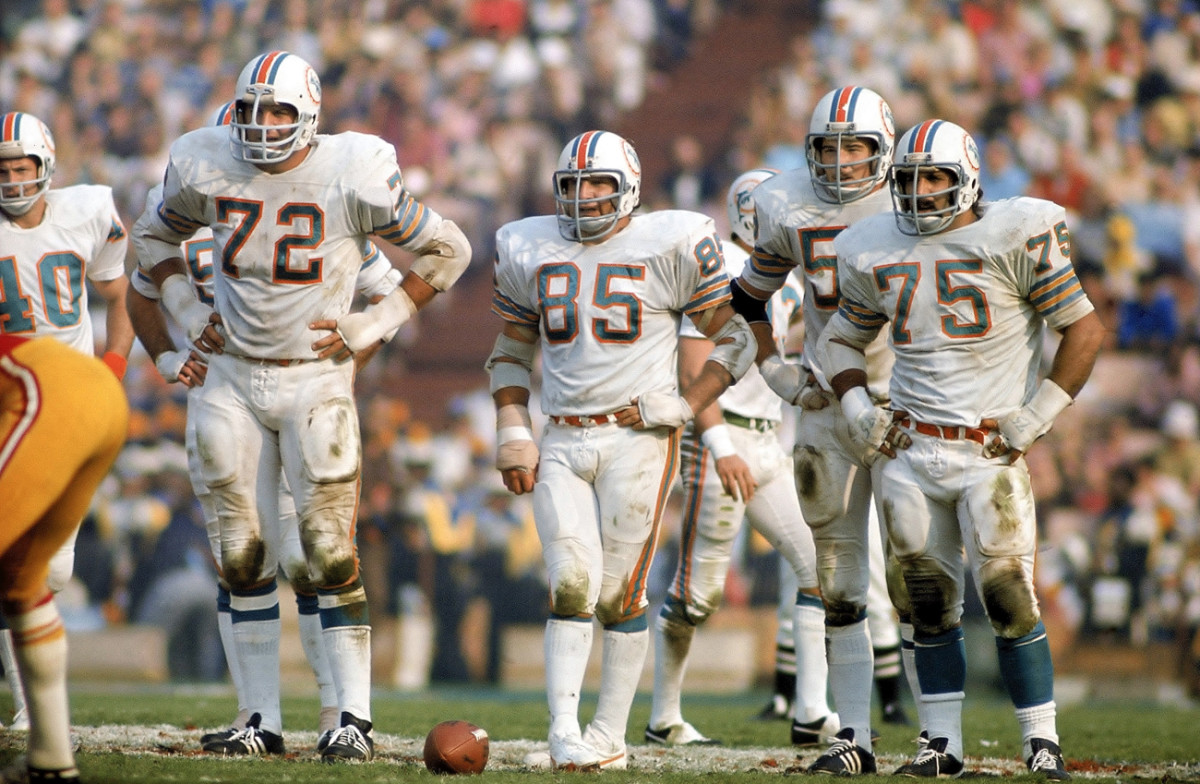
It’s forever easy to think that Miami’s top industry, after tourism, boils down to the cliché of political chicanery, petty vanities and believe-it-or-not news stories (“Florida Man Arrested with Alligator in His Backpack”) that continue to make Carl Hiaasen and Dave Barry very rich. Few fly into MIA expecting gravitas. Yet, of course, serious work goes on here. After a helmet-first tackle in 1985 made a quadriplegic of Buoniconti’s son Marc, a linebacker at The Citadel, Nick teamed up with University of Miami neurosurgeon Barth Green to co-found the Miami Project to Cure Paralysis, leveraging every angle of Buoniconti’s celebrity to raise $2 million in year one. By 1990 the Project was well on its way to becoming the world’s largest center for spinal cord-injury and paralysis research, one of South Florida’s few civic anchors.
Much of that was due to Nick’s irresistible backstory. The Dolphins’ 1972 and ’73 championships command unique reverence as the fractured region’s first pro sports title winners. And Marc’s paralysis, widely covered in the media, lent Nick’s fame horrific depth; he became an unwilling model for life after the cheering stops and was accorded universal respect, even awe, for enduring what seemed an unending penance.
For though Marc became the Miami Project’s face, it was Nick who provided the indefatigable fuel for a money engine—the Buoniconti Fund—that has now raised more than $450 million, pays the salaries of 300 scientists and staff, and provides hope and comfort to thousands. Year after year, it was always Nick recruiting doctors, cajoling athletes to attend the Project’s annual New York City gala, making call after call on a mission that, on a personal level at least, seemed doomed.
“I would trade this [Super Bowl] ring in, and all my individual accomplishments, if one thing could happen in my lifetime,” Nick said to conclude his Pro Football Hall of Fame induction speech, in 2001. “My son Marc dreams that he walks. And as a father, I would like nothing more than to walk by his side.”
The ironic tragedy—that the very game which made Nick’s name also destroyed his son—became South Florida lore: How his first wife, Terry (Marc’s mother), pleaded with Marc’s older brother, Nick III, to cut short his career at Duke rather than risk facing another devastating blow. How, consumed by guilt, Nick once threatened to wrench off his Perfect Season ring and never wear it again. When Terry divorced Nick in 1997 after 35 years together, the news went notably uncovered; no one, it seemed, had the stomach for what seemed the last casualty of Marc’s collision, even if Nick didn’t publicly indulge any narrative connecting the events or guilt. “I never blamed myself,” Buoniconti told me when we first met in 2009, ring still on his hand. “I never blamed football.”
No, Nick saw Marc’s fate as a lightning-bolt rarity, a freak event compounded by The Citadel’s allegedly negligent medical staff. (A jury dismissed the Buoniconti’s $22.5 million lawsuit against a team doctor in 1988; the school and trainer settled with the family for $800,000.) Conceding the irony of his family’s relationship with the game is one thing—“Our greatest joy and greatest sadness, right”—but condemning football as inherently destructive was always something else. Wasn’t he himself proof otherwise?
Few longtime players—much less linebackers—emerged from the NFL fray more spectacularly intact. After retirement in 1976 Buoniconti went on to hit a pinnacle in three more careers: attorney and agent for 30 pro athletes; millionaire president of U.S. Tobacco; co-host for 23 years on HBO’s Inside the NFL. In 2009, when I met him to write a Sports Illustrated piece on Marc, Nick was humming along with No. 4, the Miami Project. He was 68, looked 15 years younger, played golf daily; he and Lynn lived in a $1.98 million home in Coral Gables. He sat on the terrace of his nearby country club, dynamic and bluntly eloquent. People kept stopping to say hello.
The family liked the story, but I didn’t speak to Nick again. Then, last October, he left a phone message. Nick, his words slightly halting, asked me to call him back and recited his number. “Okay,” he said. “Goodbye.”
Then came a long pause. You could hear him turn away from the phone. Finally Buoniconti asked, “How do you hang up, Lynn?”
Her voice, quavering, rose in disbelief. “ ‘How do you hang up?’ ” Lynn called from the background.
“Yeah.”
Then the line went dead.
* * *
Was there ever a more American life? Was there ever more reason for a man to be happy? Nick Buoniconti, born in 1940 the grandson of Italian immigrants, was raised in the south end of Springfield, Mass., by loving parents, surrounded by countless relatives, enveloped in the scent of fresh-baked bread. He came of age in a U.S. rising to world dominance and lived out its favorite narrative: Forever underestimated, time and again he proved all doubters wrong.
But Buoniconti wasn’t light of heart. Even at his warmest he possessed a hard, judgmental eye, wary of depending on anyone. Maybe that came from being a baker’s boy, ambitious in a home with no money for college. Or maybe it went deeper; his mother, Patsy, was a Mercolino, the Neapolitan family line streaked with a dark certitude: Life is out to get you. And wasn’t it? Nick nearly drowned at two, fell out of a moving car at three and survived scarlet fever at eight. At 12, when the school year ended, he went into the tobacco fields, weeding, picking, suckering and stringing leaves in draining heat for $6 a day.
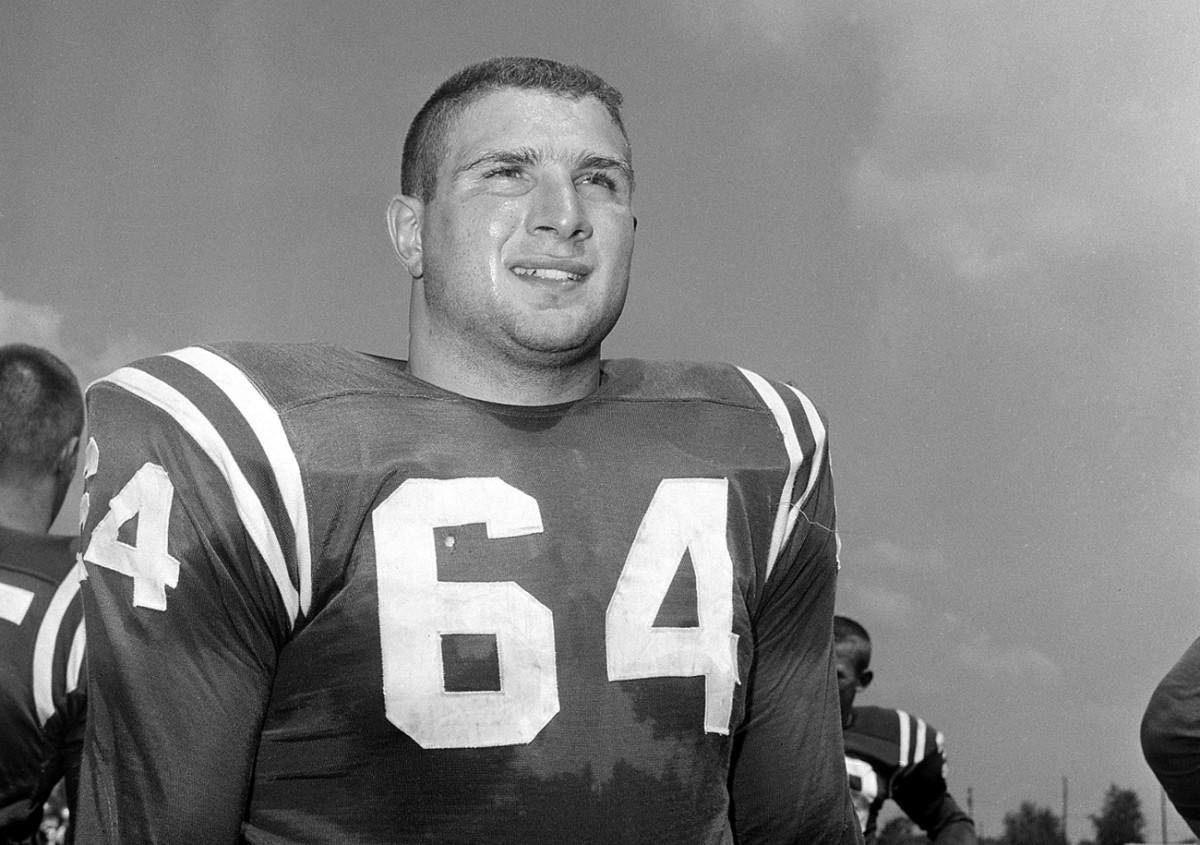
Sure, for a six-year altar boy, the pride of the nuns at Cathedral High, Buoniconti’s ascension to play football at Notre Dame in 1958 seemed the apex of Catholic dreams. But disillusion came fast. An all-state outfielder, Nick loved baseball like his dad, Big Nick, who’d pitched semi-pro ball all over New England. Notre Dame, beacon of virtue, lured young Nick with the promise that—Sure, son—he could play baseball, too. But upon arrival, Buoniconti found that he was there for football, period. “Notre Dame lied to me,” he says.
No wonder that, compared to headhunting peers like Dick Butkus, Buoniconti always came off as strictly business. When Dolphins coach Don Shula learned, decades later, of Buoniconti’s childhood nickname, he nearly choked. “You mean to tell me,” he said, “that I coached a mean son of a bitch named Skippy?!’”
Tough, mulish—any variant will do. Buoniconti was the only player to survive telling Shula, in front of the team, to “shut the f--- up.” Shula bristled, but he respected it: Buoniconti was rushing to a teammate’s defense. He didn’t do anything for effect. He couldn’t afford to. This was an All-America who, after Notre Dame coach Joe Kuharich dubbed him too small to play pro ball—“He’ll run through a brick wall for you,” Kuharich quipped, “but he’ll leave a small hole”—had been humiliatingly ignored by the NFL and passed over in the first 12 rounds of the upstart AFL’s draft.
Buoniconti, at 215 pounds, played guard and linebacker during one of Notre Dame’s worst eras and seemed a Fighting Irish epitome—pious, macho, consumed by football. But he wasn’t. Irked freshman year by his boring quarterback roommate, Buoniconti kicked him out and moved in with newfound pal Richie Catenacci, a 5'4" civilian. Told by the Dean of Men, a priest, that he was breaking Notre Dame’s long tradition of housing athletes together, Nick dug in. “The rule is stupid,” he said.
The two young men roomed together for four years, had the usual alcohol-fueled escapades, became best friends. Buoniconti convinced his roommate there was nothing unmanly about singing in the glee club, and it changed Catenacci’s life. Richie insisted that Nick improve a weak vocabulary, so they created a “word of the day” to learn and use. “He wanted to be educated, well-spoken,” Catenacci says.
Yet Buoniconti also played each snap with life-or-death fervor. He led the Irish with 74 tackles his senior year and then, minutes into his first day of Boston Patriots camp, in 1962, brawled with veteran tight end—and ordained Baptist minister—Tony Romeo, who Nick says infringed on “my territory, my land.” It wasn’t a matter of manhood. Buoniconti held no romantic notions about the game. Football was a vehicle, a means, and championships made it move faster. That year he married his high school sweetheart, Terry Salamano, a nurse. He wanted to be rich.
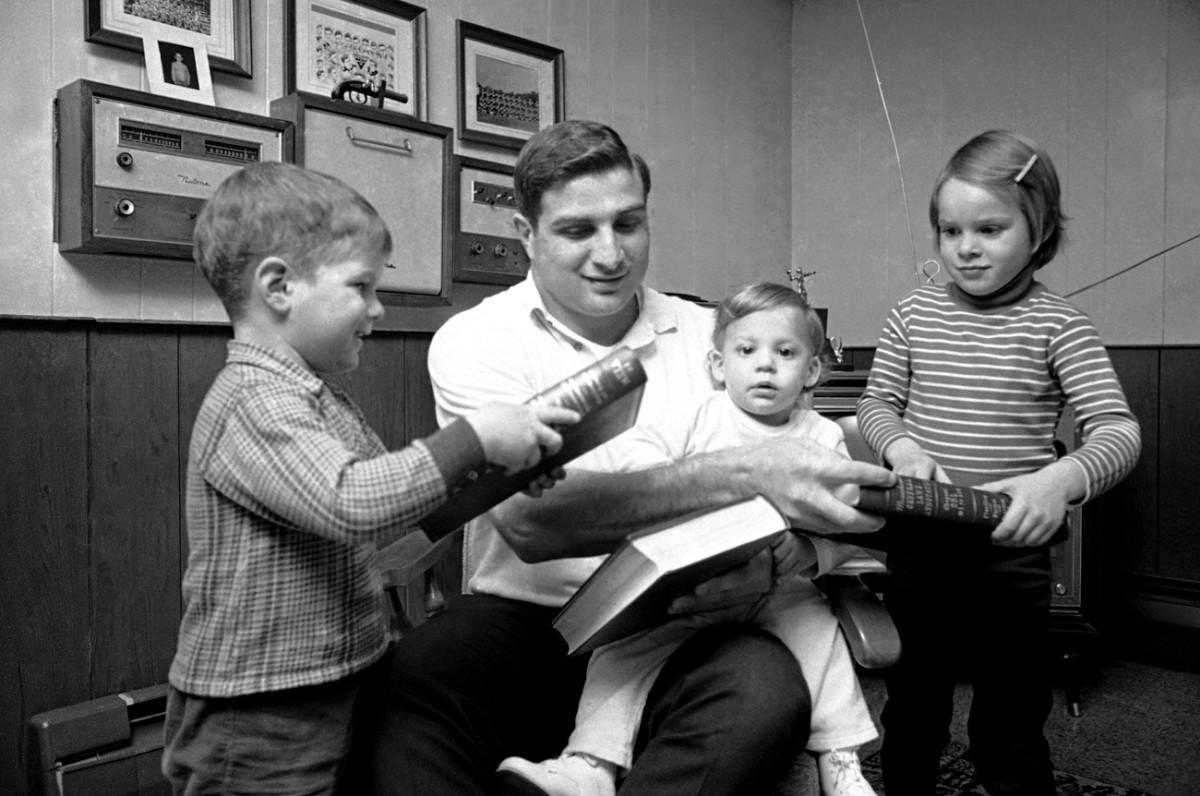
“He worked so hard,” Terry says, “but I always felt it was to better our lives, our children’s lives. The naiveté: We went to somebody’s house and they had all this shrimp in a bowl and we were like, ‘Look at all that shrimp!’ We didn’t even know what caviar was. It was beautiful. I felt that we grew together.”
Opponents, meanwhile, sniffed at Buoniconti’s size, compared him to a fire hydrant, even if he did lead the Patriots in tackles and interceptions over his seven seasons. Nick didn’t care. “When Butkus hits you, you fall the way he wants,” he said. “When I hit you, you fall the way you want. But you still fall.”
Such satisfactions went only so far. The $15,000 he earned as a rookie was never going to be enough. In 1963, Terry had Gina, the first of three quick babies, and Nick enrolled at Boston’s Suffolk Law School, racing to courses at night, briefing cases on road trips, studying while teammates partied. He finished in four years. “I didn’t particularly care for football,” he says. “I was tired of it.”
Buoniconti didn’t know it then, but such is the secret of all good negotiators: He could walk away. He had just signed a lease to open a law office in Chestnut Hill when the Patriots traded him to the hapless Dolphins before the 1969 season. Miami owner Joe Robbie was a famous skinflint; Nick, acting as his own agent, demanded double his pay, guaranteed. “We don’t give guaranteed contracts,” Robbie said.
Buoniconti sent his retirement papers to the NFL. Robbie tried holding firm, but—even with the law practice stalled and his only alternative a $10,000 job at the U.S. attorney’s office—Nick wouldn’t budge. “It really didn’t matter to me if I retired,” Buoniconti says. “I didn’t care.”

Robbie folded. Buoniconti was named the Dolphins’ MVP his first season and, after Shula took over, again when they improved from three to 10 wins in 1970. In ’71, with Buoniconti the hub of coordinator Bill Arnsparger’s ever-stunting defenses, the Dolphins surrendered just 12.4 points a game and blanked the defending champ Colts in the AFC championship. By then the assault on Buoniconti’s body and brain was well underway. He says he was knocked unconscious four or five times over his 14-year career, the worst during the Cowboys’ 24–3 rout of Miami in Super Bowl VI that January. Buoniconti smashed into a player in the third quarter and blacked out—but stayed on his feet and on the field until game’s end. “I was gone,” he says. “That was the worst one. I don’t remember playing.”
The subsequent Perfect Season in ’72—the undefeated, untied campaign culminating in a 14–7 win over Washington in Super Bowl VI—remains the team’s monument, but in ’73, on the way to another Super Bowl title, the Dolphins allowed even fewer points, just five touchdown passes all season, and Buoniconti set a team record with 162 tackles.
Buoniconti has estimated that he absorbed 520,000 hits to the head. “My last game, I got on my hands and knees and kissed the ground and thanked God that I’d never gotten seriously hurt.”
Of those, 91 came unassisted, and over time it would become clear which flank he favored. Buoniconti’s right wrist, knee and ankle would become arthritic; his right hip would need to be replaced; range of motion in his right shoulder was limited. Buoniconti has publicly estimated that over his 14-year pro career (not to mention 13 more years in boyhood, high school and college football) he has absorbed some 520,000 hits to the head. That MRIs in 2015 and ’16 would reveal brain shrinkage—surfacing first in the right frontal and temporal regions—seemed almost logical.
At the time Buoniconti noticed none of it. A broken right thumb forced him to miss the 1975 season, and he gladly began working as a CBS analyst. A spate of injuries prompted the Dolphins to ask him back in ’76, twice; Buoniconti demanded $125,000 and got it. He started just four games that season, then said goodbye for good. He was 36, certain he’d gotten out clean.
“My last game, at the end I got on my hands and knees and kissed the ground and thanked God that I’d never gotten seriously hurt,” Buoniconti says. “Fourteen-year career? I could’ve been maimed.”
* * *
Instead, he looked great. Wavy hair just starting to gray, hawkish nose: From the neck up Nick looked like Michelangelo’s David, done slinging rocks and ready to be anointed king. He radiated authority, though that on-field ferocity needed softening, first in the courtroom, and later as the agent for Yankees shortstop Bucky Dent, Expos outfielder Andre Dawson and others.
Loaded with leverage after Dent’s epic playoff home run over the Red Sox in 1978, Buoniconti nearly laughed when New York owner George Steinbrenner threatened to trade Dent the following winter. “Go ahead!” Buoniconti told him over lunch. “There’ll be a lot of takers.”
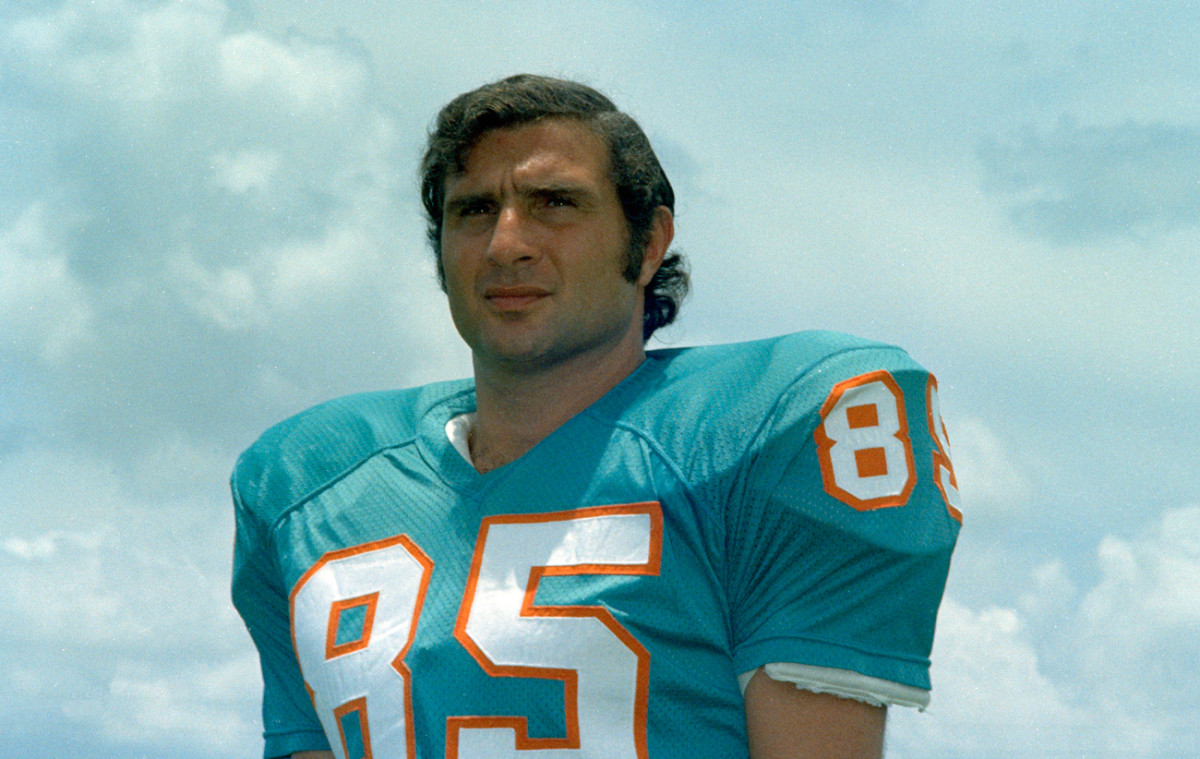
Steinbrenner stonewalled through the 1979 season, and Dent walked out of Yankee Stadium after the final game certain his time in the Bronx was over. Buoniconti, unfazed, mused to reporters about the team’s hardships, told the Yankees’ GM that Dent was signing with the Angels and booked their flight to L.A. Steinbrenner signed Dent to a five-year extension. “Good luck with your prenup, honey,” Steinbrenner later told Lynn, when Nick introduced her as his fiancée at a New York benefit. “That’s the meanest guy I ever negotiated with.”
Because he could walk away—from just about anyone. Buoniconti loved corporate work, pushing paper, because, he says, “I didn’t have to deal with clients.” In 1980 he landed Dawson’s first $1 million-a-year salary; four years later, after Dawson hadn’t heard from Buoniconti for 14 months, Dawson fired him. “When I got traded, I didn’t hear from him, either,” Dent says of his midseason departure from the Yankees in ’82. “I was like, What’s going on here? Nick wasn’t one of those warm-and-fuzzy guys . . . but he did a good job for me.”
To be fair, Buoniconti’s plate was piled high. People kept tapping him for leadership, for connections to his old buddies from his days in Boston and the AFL, guys like congressmen Jack Kemp and Tip O’Neill. In 1982 the Dade County Democratic party named Nick chairman; he quickly organized a $250-a-plate dinner, induced the governor to come, and raised $80,000. Meanwhile, his long association with U.S. Tobacco, the nation’s largest purveyor of smokeless products, like Skoal and Copenhagen, was beginning to pay off.
UST’s president, Louis Bantle, first asked Buoniconti and some other Dolphins to mingle at a client cocktail party in the early 1970s. Then he hired Nick for legal work. In ’83 Nick was named executive VP in charge of legal and federal affairs and public relations. Sales had spiked fivefold over the previous decade, but clouds loomed; the business was becoming viewed as a health menace. In ’88, the U.S. surgeon general declared nicotine goods such as chewing tobacco to be as addictive as heroin.
But even as Buoniconti lobbied over the years for the tobacco industry, his image as an athlete—and a perfect one, at that—prevailed. Indeed, he proved so valuable a spokesman that in ’85, Bantle made him UST’s president and COO. The one-time tobacco picker—who had never smoked or dipped himself—became the industry’s most famous, and ardent, defender.
In one typical interview that fall, with the Chicago Tribune, Buoniconti railed against “anti-tobacco forces” and touted scientists who, he said, maintained “there’s absolutely nothing wrong with your product.” He went on: “We’ll survive. We were the first packaged-good product in the United States. We helped fund the Revolutionary War!”
It wasn’t the last time Buoniconti’s mind, shrewd and curious, would dodge a discomfiting truth. He’s not incapable of irony—“I thought 1985 would be a great year because 85 was my jersey number and so great to me, and actually it was the worst year of my life”—but Buoniconti sprang out of an era when guilt didn’t travel over generations. He liked to believe that the world came at a man head on, laid out choices and left him free to choose. Use tobacco or don’t. Play football or don’t.
It’s not in Buoniconti to admit the sheer weirdness of the fact that in ’85 he became a human fulcrum—at once seller and sufferer, perpetrator and victim—of public health crises involving two titanic American pastimes. “I’m not getting into that, O.K.?” he yells. “One has nothing to do with the other!”
A day after Marc’s injury, Terry found her husband sitting on the floor outside intensive care, tears streaming, saying, “God is punishing me, God is punishing me.”
The first blow came in the summer when Big Nick, a lifetime smoker, died at 75 of lung cancer, just as his son was taking over UST. Of his four-year stint on top of the company, Buoniconti says, “I loved it. I loved being in charge; it was like being a middle linebacker and calling the defenses.” Asked if he ever felt conflicted, considering tobacco’s now-confirmed harmful effects, he says, “Yeah, we were under fire a lot, mostly taxes. But in my mind, we never marketed it to kids. It was a good job. I enjoyed it.”
The second blow came 12 days after he invoked the American Revolution in the Tribune. Nick and Terry were at the New Jersey spread of his old roomie, Richie Catenacci. It was a perfect Saturday, the kind where you can’t help but think, Yes, we made it: 72 degrees, sitting in the gazebo, sipping champagne. Nick asked Catenacci’s nephew to check the football scores; both games featuring his linebacker sons—Marc at The Citadel, Nick III at Duke—had been going for an hour. The phone rang.
It was Bantle. Marc had been hurt; no one knew how bad. Bantle gave Nick a number to call. He dialed thinking, Shoulder, maybe a knee. . . . A doctor answered. His first words were, “Mr. Buoniconti, your son dislocated his neck and he’s going to be paralyzed for the rest of his life.”
Nick fell to his knees. Richie reached down to grab him but, for the first time in their 27-year friendship, Nick looked lost. “How am I going to tell his mother?” he begged. But he did it; he went outside and blasted a hole in Terry’s world. She’ll never forget that day, how beautiful it was, Nick’s face coming closer, his mouth saying that Marc would never walk again. She’ll never forget, too, how a day later, outside of intensive care, she found her husband sitting on the floor, tears streaming, saying, “God is punishing me, God is punishing me.”
And right then, amid a mother’s worst nightmare and a scuttling fear, Terry had this one moment of clarity. She leaned over to her husband. “God doesn’t work that way,” she said.
* * *
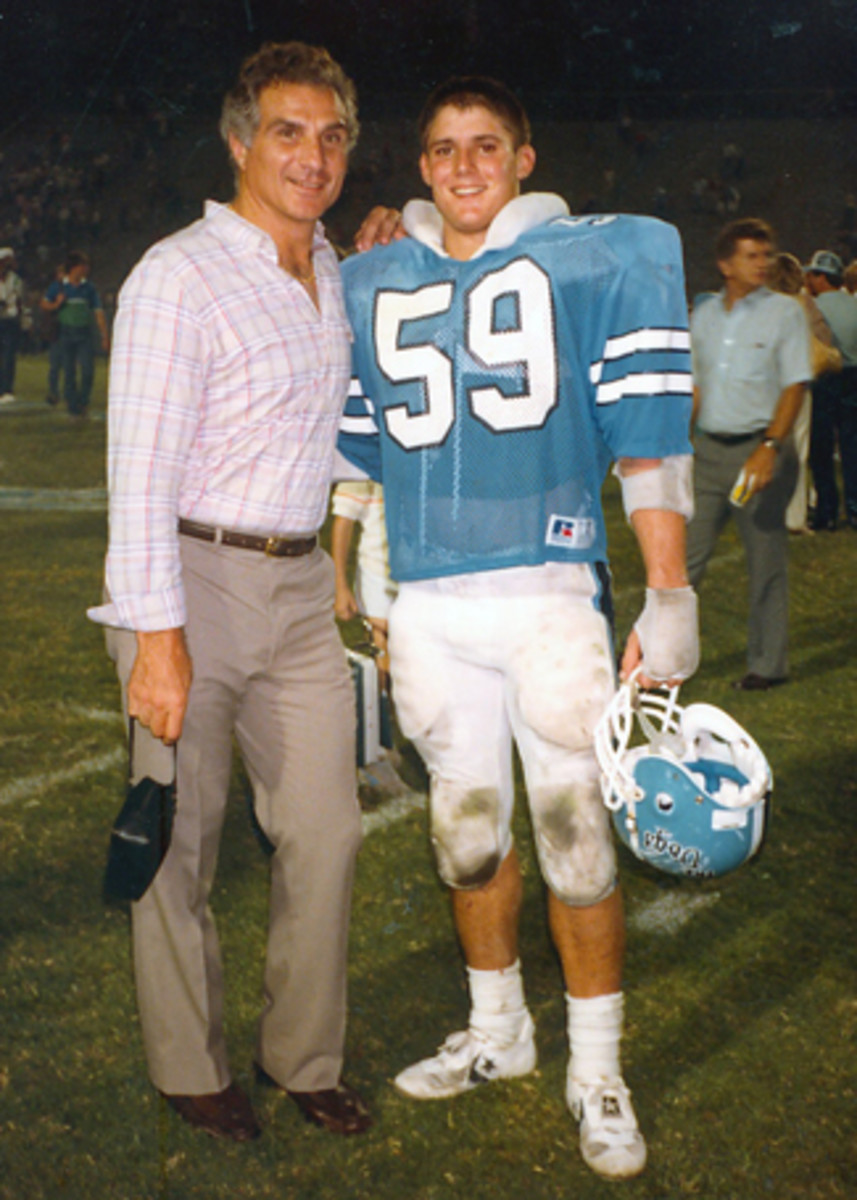
Before she became Nick’s wife, in 2000, Lynn could well imagine the black-hole enormity that paralysis becomes to anyone within its orbit. But it still took years of fundraisers and medical crises for her to realize this: “I say that Nick is married to Marc, because the No. 1 priority in Nick Buoniconti’s life is Marc Buoniconti,” Lynn says.
But she didn’t understand that fully until 2008, when Justin, her then-21-year-old son by her first marriage, was assaulted outside a Cambridge, Mass., bar and nearly died of a traumatic brain injury. “I know now: It’s as if Nick carries Marc’s weight on his shoulders,” Lynn says. “You move heaven and earth to help your child, especially when they go through a life-or-death experience.”
Once Marc was stabilized and placed into Barth Green’s care in October 1985, Nick moved fast. He landed a $100,000 pledge from UST immediately and within a month organized a fundraiser at a Dolphins game that raised another $300,000. The Miami Project was underway. “Nick is extraordinary,” Green says. “I’ve taken care of thousands of patients with brain and spinal cord injuries and paralysis, but I’ve never had a person stay so committed so long. Everybody’s gung-ho for a year or two, then they disappear. Nick has raised several hundred million dollars, and I attribute almost all of it to his charisma, his national presence, his intelligence and ability to articulate the importance of curing paralysis.”
Some believe the accident changed Nick. How could it not? Before, he was ensconced at UST headquarters in Greenwich, Conn., hardly a presence as Marc smoked pot, vandalized cars and homes, and bombed grades at South Miami’s Columbus High. Before, he’d see someone in a wheelchair, think Too bad, and keep walking. Marc’s paralysis humbled Nick, grounded him in a way that fame and fortune never could. His focus shifted south, to Miami and Marc and the Project and home.
“To the degree that he got fired from UST,” Green says. “The CEO said, ‘Look, we need a full-time president. You’ve got to give this your all. Otherwise . . . .’ And that’s when Nick left.”
The fact that UST health insurance, as part of his separation agreement, would continue to cover most of Marc’s estimated $500,000 in annual expenses made the move easier. And hustling for the Miami Project filled the void of attention and purpose felt by many retired athletes. But Nick also found himself more tolerant. A squeamish Nick held Marc during each of Marc’s ensuing health scares. In 2014, when a near-fatal respiratory infection had his son saying, for the first time, “Just let it end,” Nick spent eight hours a day, for six weeks, by Marc’s side.
“Every day in the hospital—and he hates a hospital—he sat there with me,” Marc says. Then, after a deep breath, his eyes widen and he adds, “And with my mom!”
Such emphasis assumes a knowledge of how tough that might be. After all, his parents’ spiky relationship was hardly a secret in Miami after their bitter split in 1997—and basic chronology made it easy to figure. In the fall of ’95 the 54-year-old Nick met Lynn Weiss at Dakota, a bar on Manhattan’s Upper East Side. Monday Night Football was on the TV, she was 12 years his junior and vivacious, the owner of a successful travel business. “The smartest person I’ve ever met,” Nick says. He was entranced; Lynn wasn’t. But soon they were an item.
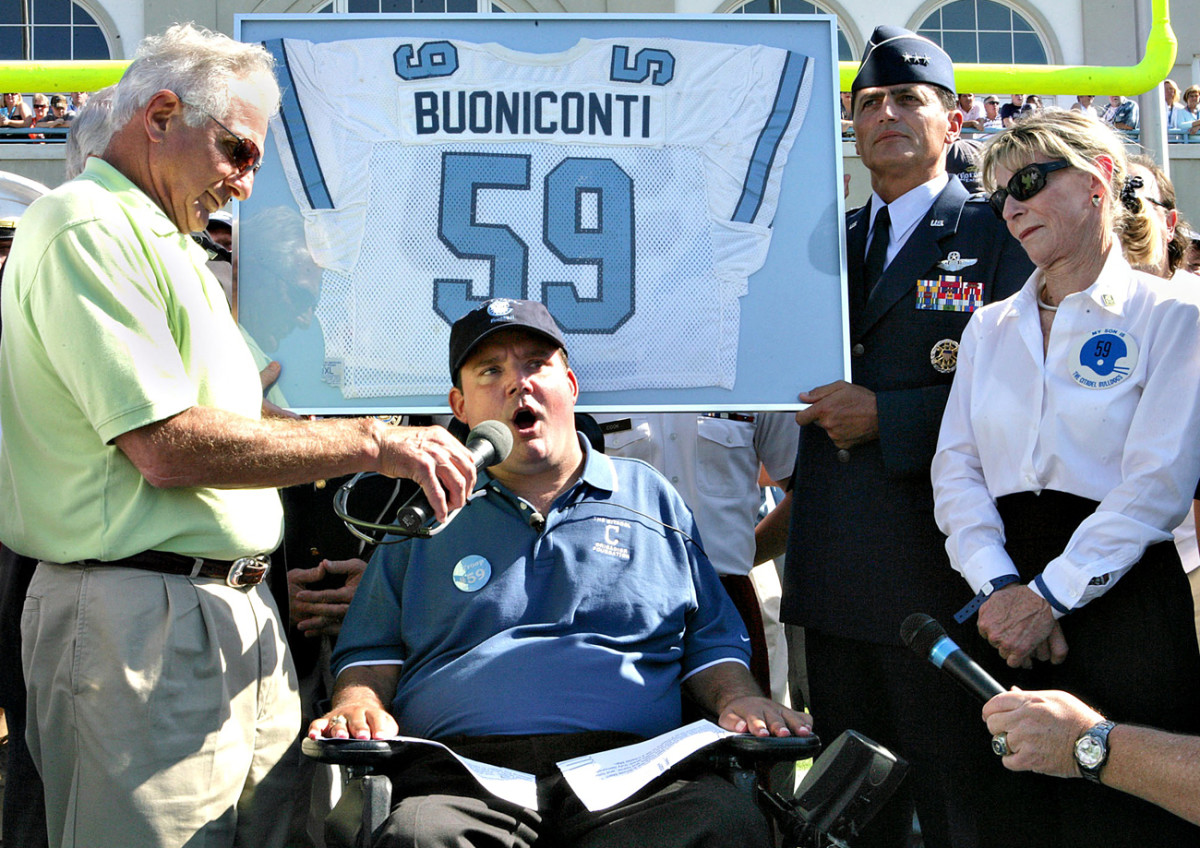
Nick and Terry, together since Cathedral High, were still married. She was furious when she found out about Lynn. At least once Buoniconti wondered, to Catenacci, why they couldn’t carry on: Growing up, a mistress—a goumad—wasn’t unheard of in some Italian households.
“There’s a side of Nick that wants to have it all and a side that recognizes you can’t,” says Catenacci. “I said, ‘The world has changed and you can’t have a wife and a goumad anymore. That’s original sin, and you know Terry’s not going to put up with that. You know the right thing—do it.’ And he did.”
That may sound like the morality of a man cornered, but Buoniconti resists glib pigeonholing. A former Democratic leader once horrified by cannabis, he supports Donald Trump and now entertains the idea of using medical marijuana. Appalled by the racist welcome doled out to black players upon their arrival for the 1965 AFL All-Star Game in New Orleans, Buoniconti joined—and fully backed—a boycott that forced the game’s move to Houston.
After decades of dating women, in the early 1990s Catenacci fell in love with a man, but he didn’t tell Nick. Years passed. Finally, on an Aspen ski lift, Buoniconti confronted his old roommate. “So when are you going to tell me?”
“What do you want to know?” Catenacci asked.
“Does he love you? Because you know I love you, and I would never want anybody to hurt you.”
* * *
Lynn’s first real scare came with Nick behind the wheel. This was in 2013. During a drive in Fort Lauderdale, all the stimuli absorbed without thinking—lights, pedestrians, directions, chitchat, radio—came confusingly alive for Nick. A simple turn across oncoming traffic became a mess, and his car jumped a curb. But he was also 72, had been forgetting things: a phone number here, a social commitment there. Lynn chalked it up to age. Then he started falling. Yet even to his doctors, it was hard to see anything out of the ordinary.
His falling had become commonplace—taking out the garbage, walking the dog. With each spill, Nick got angrier, resenting his body—the instrument that gave him everything—for betraying him.
Because unlike Mike Webster or Duerson or Seau, who suffered dramatic depression in their 30s and 40s and were dead at 50, Buoniconti’s brain trouble only surfaced in his early 70s, when even non-football playing brains present signs of shrinkage and decay. And even then, he was still speaking and flying and golfing; a February 2014 MRI at the University of Miami attributed the “mild asymmetric volume loss” in Nick’s right anterior temporal lobe—and his balance and memory issues—as “compatible with age-appropriate involutional changes.”
But then food became an obsession. Dinner out with friends would start off well—wine flowing, fun couple—then they’d notice Nick hadn’t spoken for a bit. Ordering took on urgency. He spent long minutes staring down at his plate. Lynn tried alerting his children, Gina and Nick III and Marc, but they didn’t see Nick daily. And besides, he’d always been a handful. That’s just Dad: Intense, likes to be waited on . . . .
His handwriting slowed, and became spidery. On a freezing day he came home distressed from the gym; he couldn’t figure out how to put on his coat. By then his falling had become commonplace—taking out the garbage, walking the dog, standing up from a chair. He’d drop like a sack of cement, face-first, and bleed plenty but feel no pain; by the end of 2014 he was averaging nearly one serious spill a month. And with each fall he got angrier, resenting his body—the instrument that gave him everything—for betraying him.
Doctors at the University of Miami seemed less alarmed, recommending close observation. A December 2014 exam noted that Buoniconti “does seem to be altered in his mental status,” but attributed that to, among other things, a recent fever. Lynn felt otherwise. In January ’15 she arranged a summit meeting at the Miami Project offices attended by Barth Green; scientific director Dalton Dietrich; Nick’s personal physician, Eugene Sayfie; Lynn; Nick and Gina. Marc attended via conference call.
* * *
Lynn, Nick and Gina recall that the medical staff in the meeting seemed settled on the idea that Buoniconti’s balance and mental issues were typical markers of aging, probably compounded by his football history. Green insists that he and the rest of the UM doctors were hardly that casual, that they told the family “that Nick had a post-traumatic syndrome,” Green says, “that some of the things that were happening to him were definitely related to his multiple head injuries, but he also had other stuff going on and it wasn’t classical for anything—for Alzheimer’s or Parkinson’s.”
At one point Marc, by phone, speculated that, by harping on Nick’s difficulties, Lynn was creating a “self-fulfilling prophecy”—and only making matters worse. “I still don’t know what that means. He doesn’t know what he’s talking about,” Nick says. “If I didn’t have this issue, I wouldn’t be talking about it.”
Finally, Gina cut in. “No: You have to listen to Lynn,” she said. “She lives with him.”
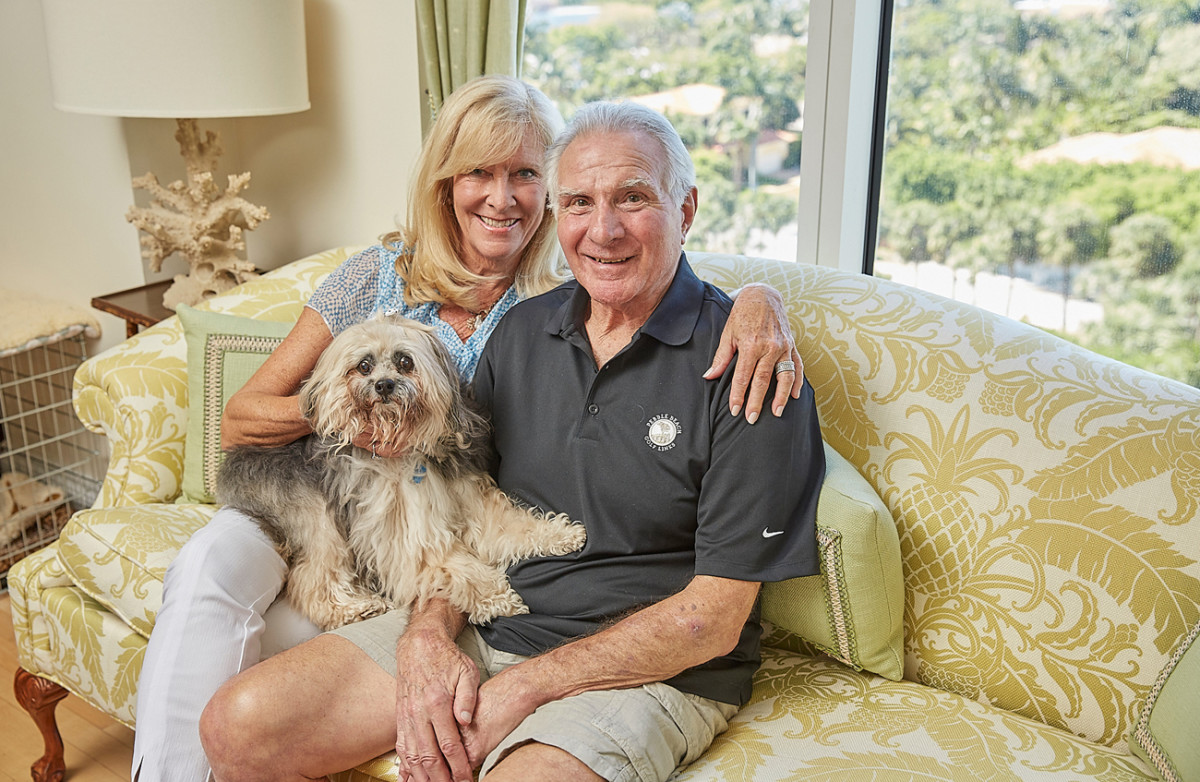
A subsequent round of neuropsychological tests found that, though Buoniconti did not “meet criteria for dementia or mild cognitive impairment,” he had mild decrements; another brain MRI that same month, however, again revealed only “age-appropriate involutional changes.” But if the medical picture was foggy, other proof seemed clear. On April 13, 2015, an ambulance rushed Buoniconti to the ER after he gashed his nose and eye in another fall. A month later, Lynn filmed Nick’s tortuous, nearly two-minute process of figuring out how to put on a T-shirt and ball cap. And both were losing patience with Buoniconti’s longtime colleagues at the Miami Project.
“I felt let down, that they didn’t understand what I’m going through—or they didn’t seem interested in finding out what I’m going through,” Buoniconti says.
In fact, Green says, the UM team had long been concerned by Buoniconti’s “cascade of sequelae”—physical and mental symptoms—and suspected CTE and its precipitating brain-clogging protein, tau, as one possible cause. But “I think all of us were in denial,” Green says. “And then once we saw what was going on, we faced a dilemma : As Nick’s friends and family here at the Miami Project, are we going to tell him, ‘Nick, you’re going downhill, and you’ve got a disease’—when there’s really no treatment or any of the symptoms? Or should we say, ‘Nick, you look great and you’re doing well and I wouldn’t worry about this’?
“So we decided, as a group, that we weren’t going to shove it down his throat unless we have something that could stop this cascade of neurological events and reverse it. As his symptoms grew, we tried to reinforce the positive—the fact he still was a kick-ass guy, he could get in front of these people and empty their pockets of millions of dollars to help research, and he could play in a golf tournament.
“Lynn was never ignored,” Green continues. “She loves Nick a lot, but in her zealousness to get help for him she’s constantly—publicly and in private—telling him that he’s going to hell. So: different philosophy. We didn’t think that was the way to go. And I still don’t think so. I don’t think it does any damn good to tell him, ‘Your whole brain is going to be full of tau. You’re dying and people aren’t caring about you, and you’re just going to keep getting worse and you need to be taken care of.’ What did that accomplish then, and what does it accomplish now? That’s not the way I fly, and it’s not because I’m stupid. It’s not because I don’t love him. It’s just a different strategy.”
At the same time, Green did recommend the testing regimen that led University of Miami doctors to a more specific diagnosis. In the spring of 2015, the head of UM’s Neuropsychology Department, Bonnie Levin, became the first to cite CTE as a possible cause of Buoniconti’s mental decline. Another UM neurologist, Carlos Singer, declared in a May ’15 summary that Buoniconti’s physical and mental symptoms were most compatible with senile dementia, Alzheimer’s disease, CTE and frontotemporal dementia.
A definitive CTE diagnosis is possible only by autopsy. But experimental testing (involving PET scans after the injection of radioactive dye that highlights the protein tau, which can be an indicator of the disease) has increasingly showed evidence of CTE in small samples of living patients. In November 2013, Hall of Fame running back Tony Dorsett—the most famous of a cadre of 14 NFL veterans who underwent that testing—revealed to ESPN that his exam at UCLA confirmed the presence of tau and other signs of CTE. A year and a half later, in May 2015, at Lynn’s suggestion, Singer agreed to refer Buoniconti for an experimental PET scan at the Feinstein Institute in Manhasset, N.Y., on Long Island.
But Nick was tired of the prodding. They flew to their Long Island home, and summer and fall passed there with him refusing to go. Lynn issued a winter ultimatum: Do the scans or I’m not going back to Miami. Now he knew how Robbie and Steinbrenner felt.
Though they did not measure specifically for tau, the two Feinstein scans indicated damage that went beyond “involutional”—consistent with Parkinsonian syndrome and CTE. The Feinstein neurologist, Andrew Feigin, confirmed to Nick that atrophy had set in on the right side of his brain and believed it was due to abnormal amounts of tau. He said the protein would soon spread to the left side, and that it could never be reversed.
“It was like a car accident,” Lynn says. “The point of impact.”
The couple stopped at a diner on the way home. Nick said “yeah” when she asked if he understood, and then they sat there crying.
* * *
It felt like a death sentence. There was no word, no possible treatment, offering any hope. And Buoniconti wasn’t a glass-half-full guy to begin with. Even when his life had seemed a testament to optimism, his disposition had folks calling him Negative Nick. Now, with neither work nor golf to distract him, Buoniconti’s lifelong terror of dying had room to run. The Mercolino darkness kicked in hard.
“We’re the players who built the game, but have been forgotten,” Nick says. “The settlement is a joke. They are waiting for us to die.”
“He’s frustrated and depressed,” Marc said in November. “He’s lost in his own physical disability and there’s no break from it. He’s sitting at his house; he has no outlets. He falls down, and that conversation only exacerbates it. That’s his life, man-—a vicious cycle.”
Marc calls it “heartbreaking” to watch his rock crumble, but he didn’t doubt the reason. For decades he had pushed back against those who cited his paralysis as Exhibit A in the case against the game, celebrating it as a vehicle for character building and teamwork. No more.
“If someone asked if their child should play organized contact football, I could not in good conscience recommend it,” Marc says. “I don’t think it’s safe. It’s pretty evident that something significant is happening to the brain as far as disrupted development over time. I cannot recommend football for, really, anybody. I was 50-50 on this already but, then, watching my dad—that sealed it for me.”
Though he knows this admission cements the Buonicontis as the first family of football tragedy, Marc won’t play the victim. Early predictions had him living 20 years, tops, as a quadriplegic, and he’s survived at least four near-death scares in the 31 years since. He calls his existence “gravy.” And in his 32nd year inside a lifeless body, something has changed; for the first time, father and son’s roles have reversed. Now Marc’s the one urging Nick to stop with the self-pity. There’s always someone worse off than you..
Says Marc: “I’ve told him, ‘You’ve got to get your s--- together. Look at me. My life sucks, but I make the best of it.’ And he’s like, ‘I know, I know.’ But it hasn’t changed his approach to life.”
Though he knows Lynn’s lot is thankless—“God bless her for taking care of him; my dad’s a pain in the ass”—Marc still wonders if her focus on Nick’s deficits makes them worse. Nick and Lynn scoff at this; it remains a touchy issue. But drained of family drama, Marc’s theory on positive reinforcement seems less a potshot than one more desperate response to an epidemic without cure. Everybody’s searching.
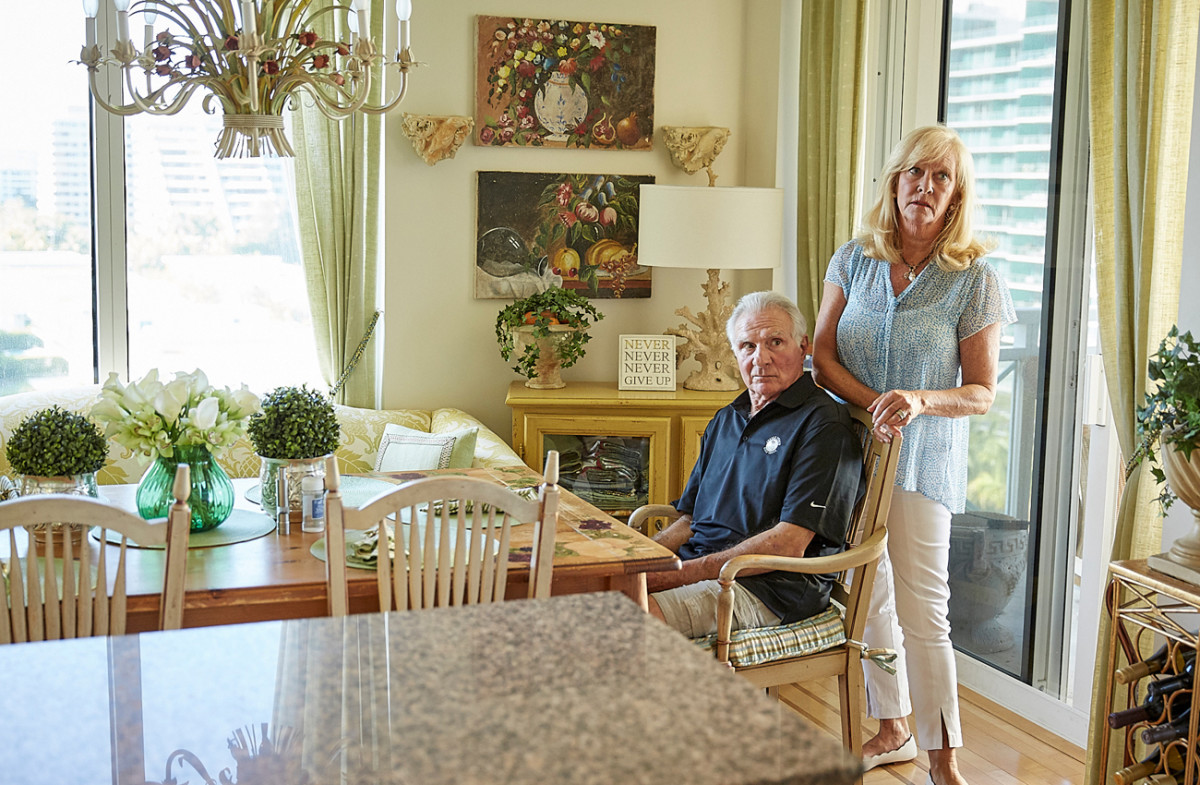
And the fact is, one reason Nick decided to make public his decline was to mine some good of it. No ailing ex-player, after all, has had more resources—a blue-ribbon health care plan, money for the travel and costs of experimental tests that insurance won’t cover, instant access to an innovative and grateful medical staff, a partner with patience enough to research studies and sift medical files and schedule appointments—with which to navigate his condition. Yet even he is a confused mess.
“So if I’m having this problem and Lynn is hovering over me making sure things get done, can you imagine someone in the same situation who can’t figure it out?” Nick asks. “I feel for these guys. They have no direction. It’s not fair that you make the league all this money, and they don’t care about you anymore. You think they care about a player who no longer can contribute to their financial success? Come on.”
The NFL, the Players Association and the Hall of Fame Players Foundation do have various outreach programs for former players; NFL Player Care, set up in 2007, has provided more than $12 million to 980 former players in financial need and contributed $6.6 million to medical research studies. (In late April Nick hired three medical aides for round-the-clock assistance, tapping into the NFL and NFLPA’s jointly-run 88 Plan, which provides up to $118,000 per year for in-home care.) In 2010 the NFL added a neurological care program to evaluate and treat “possible” conditions for vested retirees. But the outreach for all of the above has hardly been ideal, and the $1 billion concussion settlement has added a huge new layer of bureaucracy—and resentment.
Few of the estimated 20,000 players covered by the settlement would seem better equipped to understand its legal issues and jargon than Buoniconti. The older the former player, the less likely that diseases like Alzheimer’s, ALS or dementia can be attributed solely to football; CTE remains undiagnosable in the living. That means that virtually all those who played before 1993, when NFL free agency took effect, will again miss out on the big money. For example: Nick’s dementia diagnosis, combined with his age and 14-year career, make him eligible for a settlement of just $132,000.
He doesn’t need that money to finance his evaluations and travel costs and treatments, but others of his era do. “The NFL should be volunteering to pay for this,” Buoniconti screamed abruptly in a UCLA examination room last November. “I’m so f------ pissed off at them!
“We’re the players who built the game, but have been forgotten. The settlement is a joke; the way it was structured is a joke. They are waiting for us to die. They’re going to play the clock out until everybody dies.”
* * *
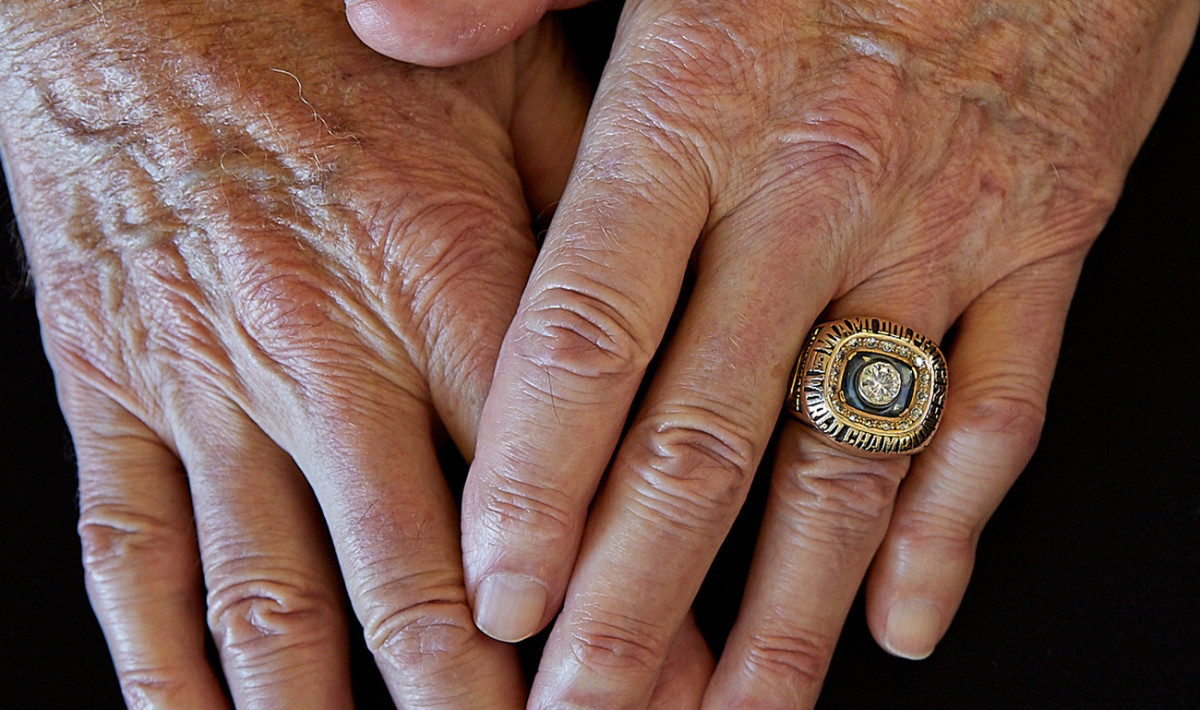
So Buoniconti has one last fight on his hands. It’s not simple, like his rookie scuffle with the Reverend Romeo. It’s not clear, like his mission to cure paralysis. No, this battle lies within, between warring impulses. There are days he wants to know exactly what’s wrong with his brain, if only because naming an enemy gives you a better chance of defeating it. And there are days when he doesn’t. What difference will it make? He’s not looking to end football. The game was his steel mill, his coal mine—a way up and out.
“I didn’t have any idea the price would be this debilitating,” Buoniconti says. “Had I known, would I have played? I had no alternative; there was no other way for me to get a college education. Football kept rewarding me—I can’t deny that. But I’m paying the price.” He shrugs, grins. “Everybody pays the piper.”
He’s hardly so resigned day to day. Buoniconti’s temper ignites over the smallest frustrations—a ringing phone, bed blankets, a hand proffered to help him stand. In January 2016 he was diagnosed with prostate cancer and Lynn with breast cancer, and the treatment has been draining. Just before the family gathered for the annual Miami Project gala in New York City last September, Nick tumbled over a chair and gashed up his forehead and nose again.
“When you marry your best friend and now he’s not your best friend anymore because there’s someone else in there, it’s very difficult,” Lynn says. “He looks like the person I married. But he really isn’t there.”
In September 2016, Gina, Marc and Nick III urged their dad to hire a driver and live-in aide, and stick to his prescribed therapies, if for nothing else than to save his marriage. “She was ready to leave him,” Marc says. “I don’t blame her.”
“Had I known, would I have played?” Buoniconti says. “I had no alternative. Football kept rewarding me—I can’t deny that.”
The night Buoniconti was to emcee the gala in New York, an HBO makeup artist slathered pancake on the fresh gashes on his face. A New York Times videographer tried interviewing him, but his mind derailed 46 seconds in. “I’m not ready for this,” Nick said, wandering abruptly off camera. It took 20 minutes of sitting alone in the Waldorf ballroom before Lynn could calm him down. (Terry, who is remarried and goes months without seeing Nick, was there and struck by his vacant stare. “I thought, ‘Is he going to be able to even get through speaking?’” she says. “But he got up there and did great.”)
Still, it was to placate Lynn, as much as anything, that Buoniconti agreed to ride from Pebble Beach to Westwood last November for a preliminary workup at UCLA’s groundbreaking BrainSPORT Program. But that set off another roller coaster. First, a lift: Initial exams there seemed to rule out Alzheimer’s disease and CTE. Then, six weeks later, a drop: Buoniconti’s UCLA MRI revealed significant atrophy in his frontal lobes, and the resulting diagnosis of corticobasal syndrome was what Green had been wrestling with all along. Not only is CBS a catchall that could indicate Alzheimer’s and CTE, but it’s often paired with corticobasal degeneration (CBD), a disease with a sharply defined prognosis. With no treatment or cure, “we didn’t want to pin that diagnosis on Nick because he could Google it,” Green says, “and see that the average life expectancy is six or seven years.”
The UCLA team thus recommended a cerebrospinal tap and an experimental PET scan to test for Alzheimer’s-type amyloid and the tau prominent in CTE. Nick wanted nothing to do with either. For months Lynn pushed, and he dug in. She wanted confirmation of what they were facing; he wanted only reversal.
Then, in early February, the thinnest straw presented itself: One of Nick’s brothers emailed about a newspaper story in which Joe Namath controversially claimed marked brain improvement following 120 sessions of breathing pure oxygen in a hyperbaric chamber. Despite being claustrophobic, Nick lunged for it.
He called Namath, who described a complete cure. He called Green, who was skeptical. Four University of Miami doctors weighed in, calling the procedure—which is highly effective for wound care—“relatively safe” but utterly unproven to render long-term brain improvement. Nick didn’t care. He stopped physical therapy and insisted instead on going to UM Hospital for a 140-minute, five-day-a-week experimental course of inhaling pure oxygen at high pressure in what looks like a giant transparent tanning bed.
At first he came home exhausted but “mentally brighter,” says Magaly Rodriguez, the UM surgeon in charge of Nick’s hyperbaric course. “By the end of the first week I was very encouraged. He was lighter on his feet, more focused, sharper.”
But on March 11 Buoniconti fell again while walking his dog, cutting and bruising his head, hand and elbow and requiring five stitches in one leg. His temper flared again, and the dizzy spells hit; he began to dread going inside the chamber. All signs of progress faded. On the night of March 26 Rodriguez was at home. She watched the movie Concussion, again, and prayed for Nick Buoniconti.
“We have to find a way to stop the progression of this ailment,” she says. “I remember watching him as a child, growing up [in Miami]. It’s a labor of love.”
The next morning, Buoniconti phoned four times to say that he would meet me at the chamber at 10:30 a.m. “Did I already call you?” he said after the third. After having viewed his stagnant results and rising anxiety, Rodriguez decided that, after 25 sessions, it was time to hit pause. She recommended Buoniconti undergo a new round of cognitive tests. He was relieved, really, but still sighed: another dead end.
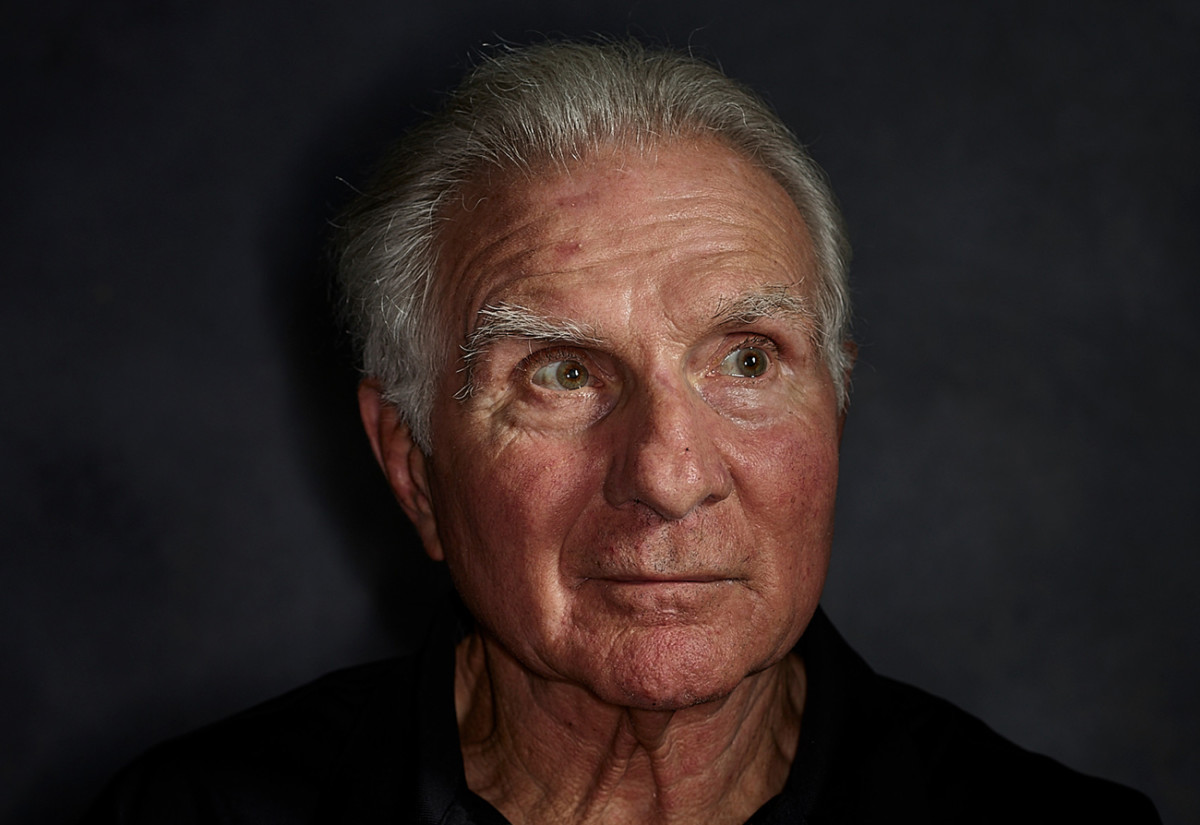
Waiting for Nick's car outside the hospital, the building that holds Buoniconti's monument—the Miami Project—loomed tall and white across the street. Later, at a nearby Starbucks, Lynn mulled a rushed retrofit of their bathroom, the mechanics of arranging 24-hour in-home care. Nick ate cheese and crackers and said his dizziness had passed. At one point he stood, one of the great names of a generation, and asked for help slipping his phone into his front-left pocket. The table went quiet, and he sat again.
“I really would like to know what the hell is going on,” Buoniconti said. Outside a breeze pushed the palms just enough so you could hear them. “But I’m going to deteriorate anyway, so do we go back to UCLA? I’m up in the air.”
Wednesday at The MMQB: The family of Jim Kiick, another of the greats from the Super Bowl-champion Dolphins of the ’70s, battles to understand his dramatic and gut-wrenching decline.
